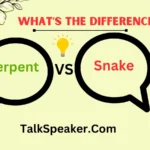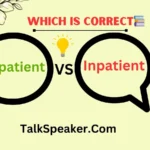When navigating the complexities of English, the choice between “speak to” and “speak with” can often cause confusion.
While these phrases might seem interchangeable at first glance, they carry subtle differences that can impact how your communication is perceived.
Understanding these nuances can enhance your clarity and professionalism, whether you’re addressing an audience or engaging in a conversation.
Understanding Prepositions in English
The Role of Prepositions
Prepositions are essential in English as they indicate relationships between different elements in a sentence. They help us understand time, place, direction, and the nature of interactions. For instance, consider the difference between “I am going to the store” and “I am at the store.” Here, “to” and “at” are prepositions that convey different details about the location.
In the context of “speak to” and “speak with,” prepositions help define the type of interaction between the speaker and the listener. Understanding these distinctions can refine your communication and ensure your message is received as intended.
Focus on “Speak To” and “Speak With”
Both “speak to” and “speak with” are commonly used in American English, but they serve different purposes and convey different tones. Let’s delve into each phrase to understand their appropriate usage and implications.
“Speak To” vs. “Speak With”
Definition and Usage of “Speak To”
- Explanation: The phrase “speak to” generally indicates a one-sided form of communication. It suggests that the speaker is delivering information or instructions, with less emphasis on engaging in a reciprocal conversation.
- Examples:
- “The manager will speak to the team about the new policy tomorrow.”
- “I need to speak to you about your recent performance.”
- Typical Contexts: Use “speak to” when delivering a message, giving instructions, or addressing someone in a formal or authoritative manner. This usage is common in professional settings, such as meetings or presentations.
Definition and Usage of “Speak With”
- Explanation: Conversely, “speak with” implies a more interactive form of communication, where both parties engage in a two-sided conversation. This phrase is used when the interaction is collaborative or conversational.
- Examples:
- “I spoke with the client about their feedback on the project.”
- “Let’s speak with the team to brainstorm some ideas.”
- Typical Contexts: Opt for “speak with” when the interaction involves dialogue or discussion. This is suitable for collaborative environments, such as team meetings, consultations, or casual conversations.
Key Differences Between “Speak To” and “Speak With”
Nature of Interaction
The primary distinction lies in the nature of the interaction:
- “Speak To”: One-sided, often instructional or formal.
- “Speak With”: Interactive, involving a two-way exchange of ideas.
Formality and Tone
- Formality: “Speak to” often carries a formal tone, suitable for official contexts or situations where the speaker holds a position of authority.
- Tone: “Speak with” is typically more informal and conversational, fitting for collaborative and equal exchanges.
Perceived Relationship
The choice between these phrases can also reflect the perceived relationship between the speaker and the listener:
- “Speak To”: May imply a hierarchical relationship or a lack of interaction.
- “Speak With”: Suggests equality and mutual participation.
Common Mistakes and Misunderstandings
Incorrect Usage Examples
- “I need to speak with you about your assignment.” (If intended as a directive, “speak to” might be more appropriate.)
- “The CEO spoke to the employees about their feedback.” (If the feedback was discussed interactively, “speak with” would be better.)
Impact of Mistakes
Using the wrong preposition can lead to misunderstandings or affect your professional image. For instance, saying “I will speak with the board about the new policies” might imply a dialogue when you actually intend to present information unilaterally.
Tips for Choosing the Correct Preposition
Assessing the Situation
To determine whether “speak to” or “speak with” is appropriate, consider the following:
- Purpose of Communication: Is it a one-sided message or a collaborative discussion?
- Relationship Dynamics: Are you addressing someone in authority or engaging in a peer-to-peer conversation?
Audience Consideration
Think about how the choice of preposition will affect your audience’s perception:
- Formal Settings: Use “speak to” for authoritative or directive communication.
- Informal or Collaborative Settings: Use “speak with” for mutual discussions and interactions.
Practical Exercises and Examples
Interactive Exercises
- Choose the Correct Preposition:
- “The professor will [speak to/speak with] the students about their research.”
- “I need to [speak to/speak with] you regarding the project update.”
- Fill in the Blanks:
- “We need to [speak to/speak with] the client before finalizing the contract.”
- “She will [speak to/speak with] her team to gather their ideas.”
Real-Life Scenarios
Consider these scenarios and decide whether “speak to” or “speak with” fits best:
- Scenario 1: You are presenting a new company policy to your staff.
- Scenario 2: You are having a discussion with a colleague about a joint project.
Answers:
- “Speak to” (formal presentation)
- “Speak with” (collaborative discussion)
Conclusion
In summary, choosing between “speak to” and “speak with” depends on the nature of the interaction, formality, and relationship dynamics.
Understanding these nuances can greatly enhance your communication skills, ensuring clarity and appropriateness in various contexts.
Final Thoughts
Whether you’re addressing an audience or engaging in a dialogue, selecting the correct preposition can impact how your message is received. By practicing and applying these insights, you can improve your communication effectiveness.

As an experienced English teacher, I’m Jessica Thompson, here to make grammar and vocabulary simple and fun. Join me on TalkSpeaker as we explore the language together, one lesson at a time!



